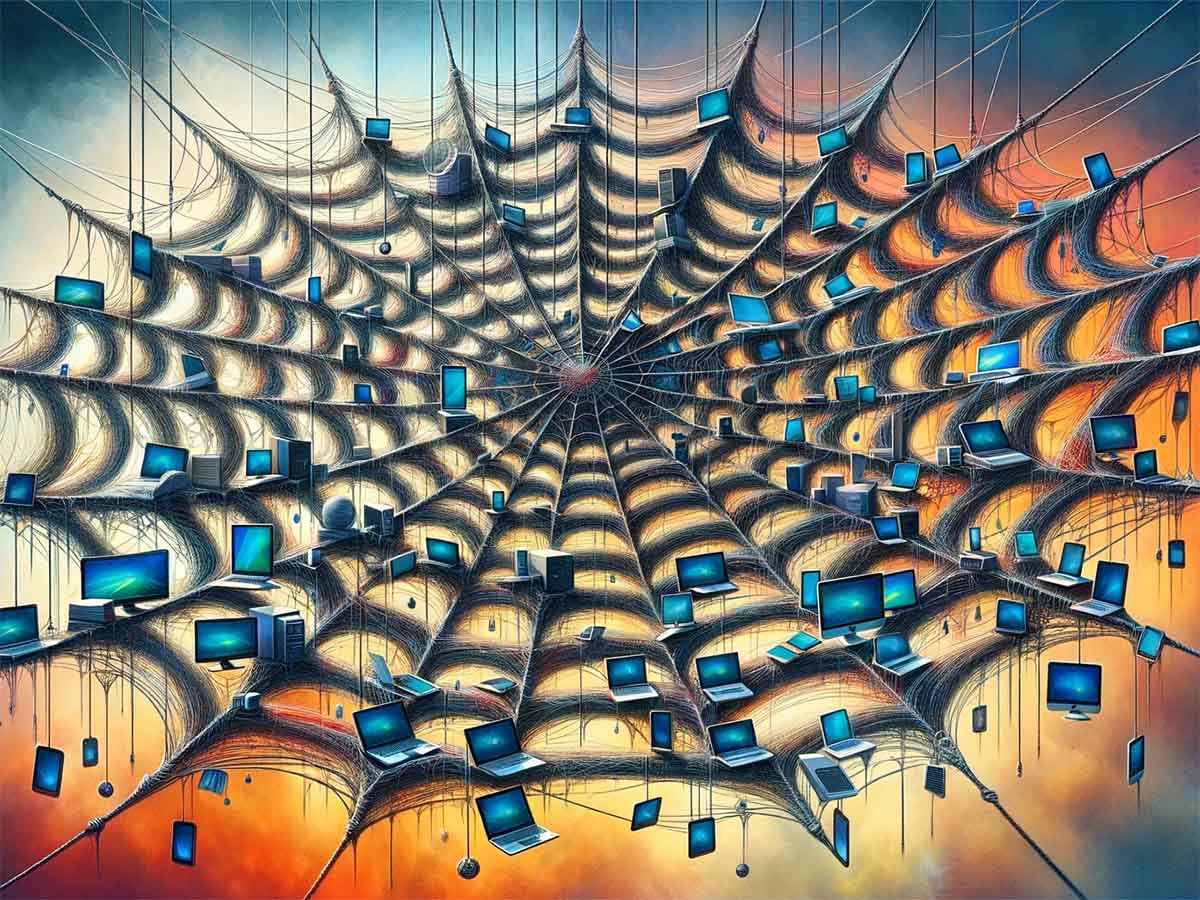Broadcast is a method of transmitting information to multiple recipients simultaneously. It’s widely used in network systems where one device sends data to all connected devices in the network.
Broadcast Examples
1. Radio Broadcasting
Radio broadcasting is one of the earliest examples demonstrating the concept of broadcasting. In this scenario, a radio station generates various programs or content. This may include news, music, talk shows, or anything in between.

Stay One Step Ahead of Cyber Threats
The station then relays this content in the form of radio waves from a central transmitter. These waves carry the broadcasted information across geographical areas. The radius of this broadcast depends on the power of the transmitter. A local station might only serve a specific town or city, while a powerful station can span an entire country.
Any radio receiver within this coverage area receives these waves. It then decodes the waves back into the original content for listeners. This could be anyone in a car listening to traffic updates, families at home tuning into a weekend show, or even listeners abroad using streaming services.
This classic example perfectly illustrates the essence of broadcasting: a single sender supplies information to multiple receivers simultaneously.
2. Television Broadcasting
Television broadcasting is another prevalent example of broad range information transmission. A television station produces or acquires visual content like movies, series, news, or live events.
This content is then transmitted in the form of a signal from the station’s broadcast tower. The strength, quality, and radius of this signal depend on various factors like the power of the broadcasting equipment and the geographical features of the broadcasting area.
Televisions equipped with tuners and antennas can receive the broadcast signal. The tuner on the television set picks up the broadcast signal and displays the broadcast content on the television screen. Thus, broadcasting enables a single television station to service a vast number of televisions simultaneously.
Today, digital broadcasting systems have enhanced the quality of audio-visual content, increased the range of broadcast signals, and more importantly, allowed the addition of multiple sub-channels within a single frequency band.
3. Wi-Fi Networks
Wi-Fi networks serve as a modern real-world example of broadcasting. Within a Wi-Fi network, devices commonly use broadcasting to communicate with each other. Under normal circumstances, a device connected to a network might want to send or receive information from another device on the same network.
When a device needs to locate others within the Wi-Fi network, it sends a specific type of message known as a broadcast message. This message is not addressed to a single recipient but is instead sent to all connected devices concurrently. It’s the digital equivalent of shouting in a room to attract everyone’s attention.
Upon receiving the broadcast message, all devices, depending on their set rules or protocols, respond accordingly. This could mean identifying themselves or providing a requested piece of data.
This form of broadcasting has become indispensable in current digital communications frameworks, providing a fast and efficient method of connecting multiple devices within a network.
Conclusion
Broadcasting is a powerful communication method that facilitates providing information to multiple recipients simultaneously. From radio and television to modern Wi-Fi networks, it plays an indispensable role in the widespread and concurrent distribution of information.
Key Takeaways
- Broadcasting is the method of sending information from one point to multiple recipients simultaneously.
- Radio and television broadcasting are classic examples which use radio waves and signals to deliver content to a vast audience.
- In a Wi-Fi network, a device broadcasts a message to all connected devices concurrently, showing broadcasting’s crucial role in digital communications.
Related Questions
1. What is the distinction between broadcast and multicast?
The main difference lies in their target audience. While a broadcast is meant for every device in a network, a multicast targets a specific group of devices within the same network.
2. What role does broadcasting play in computer networks?
Broadcasting helps devices within a computer network communicate with each other. It enables a device to send a message to all other devices simultaneously, which is essential in some network protocols.
3. Is broadcasting used in modern technology?
Yes, beyond traditional media like radio and television, broadcasting is pivotal in modern technology. It’s used in computer networks, satellite communication, and even mobile telephony.
4. What is digital broadcasting?
Digital broadcasting is a modern form of broadcasting that uses digital signals for transmission. Unlike the traditional analog signals, digital signals can carry more data, offer better quality, and allow for additional features such as multiple sub-channels within the same frequency.
5. Is Internet live streaming considered broadcasting?
Yes, live streaming on the Internet is a type of broadcasting. When you live stream, you’re sending the media content in real-time to anyone who tunes into that stream on the online platform.
"Amateurs hack systems, professionals hack people."
-- Bruce Schneier, a renown computer security professional






